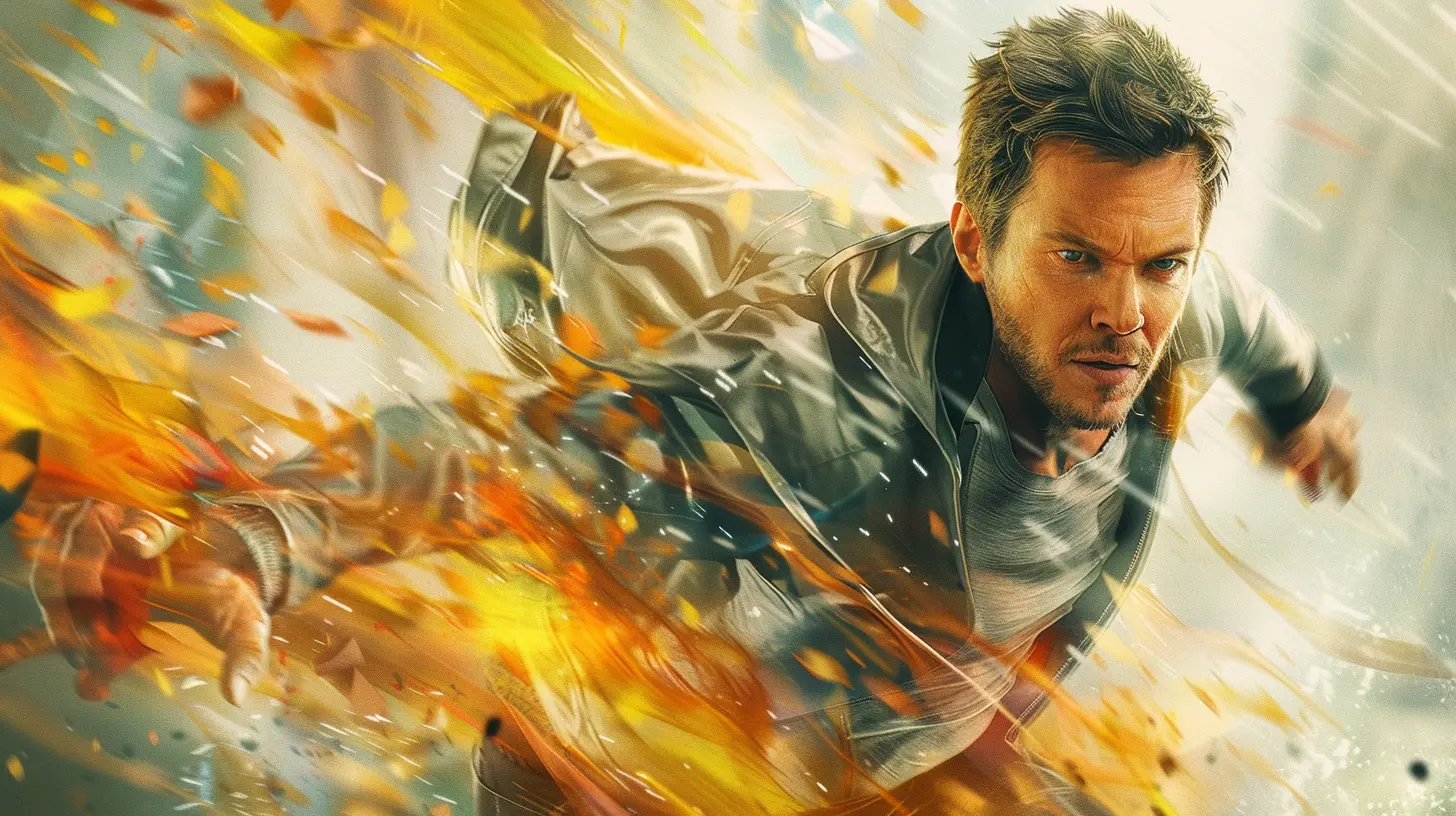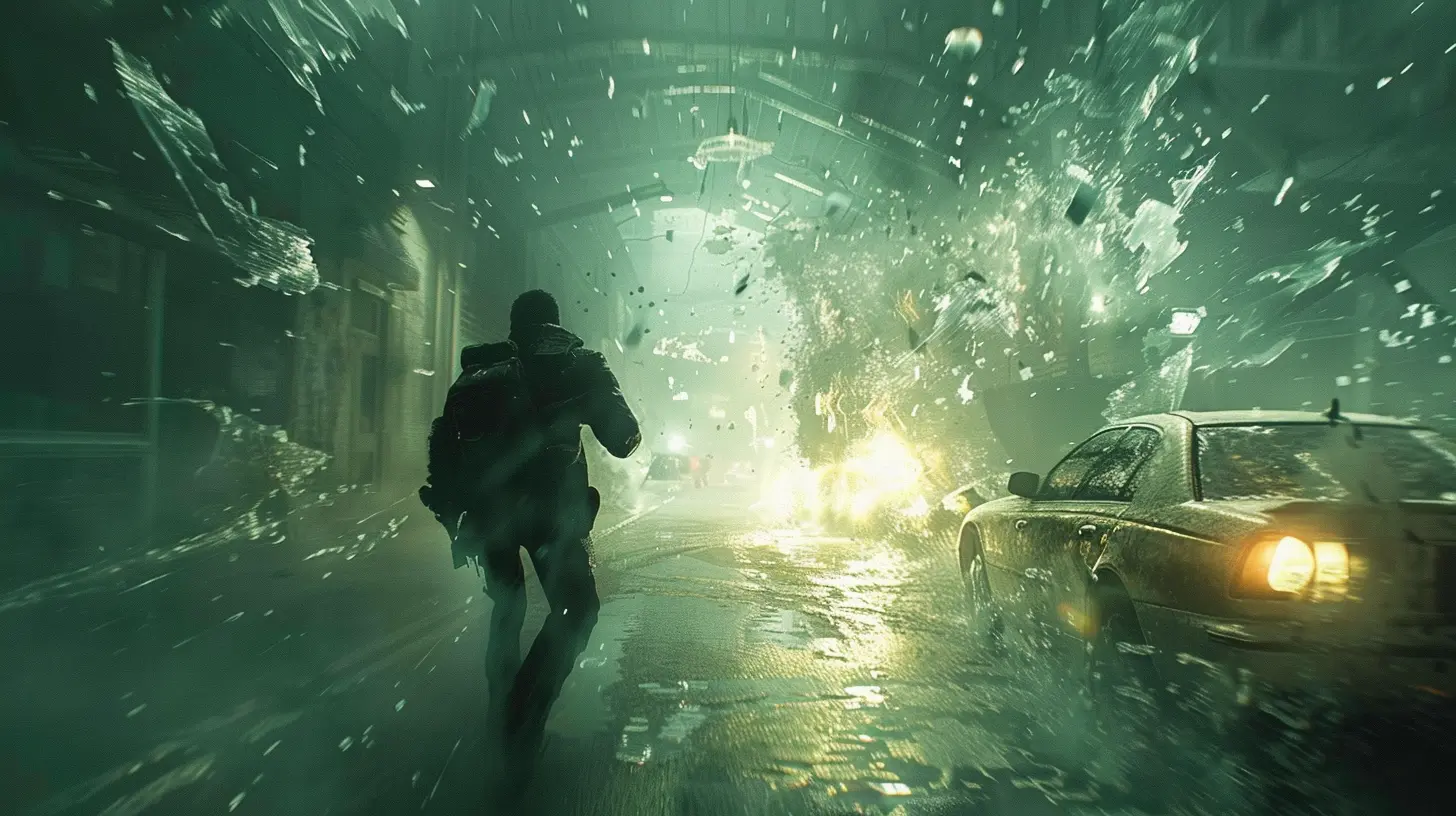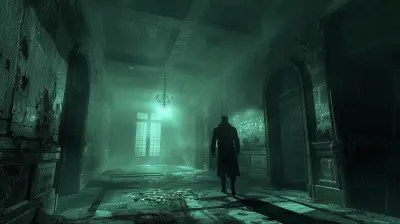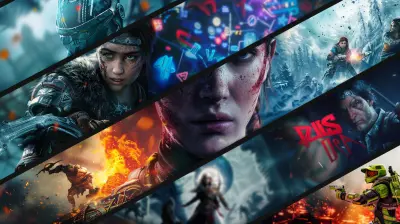11 December 2024
Have you ever wished you could bend time like a pretzel, folding it to your will, rewinding those embarrassing moments, or fast-forwarding the boring stuff? Well, Quantum Break, the mind-blowing sci-fi action game from Remedy Entertainment, asks the ultimate "what if" question: what happens when someone actually messes with time? Spoiler alert—things get messy.
But this isn't your everyday time-travel story. Nope, Quantum Break flips the script, sprinkles in alternate realities, and wraps the whole thing in a mind-bending narrative that’ll make you feel like you've been reading theoretical physics books for fun (but, y'know, waaay cooler). So, grab your plutonium (okay, totally kidding), and let's dive into Quantum Break’s time-bending narrative and the alternate realities it unravels. 
What Is Quantum Break? (For Those Living Under A Rock)
Okay, first, let’s set the stage. Quantum Break is a game that smashes together action-packed gameplay with a TV-style episodic narrative. It was developed by Remedy Entertainment (yep, the same people who gave us Alan Wake). Released in 2016, it’s a bold mix of gaming and live-action storytelling, which—let’s be honest—is like peanut butter and jelly for gamers who love a gripping plot.The game follows Jack Joyce, who gets caught up in a timey-wimey disaster after an experiment gone wrong at Riverport University. In true "oops, we broke the universe" style, time itself starts... well, breaking. We're talking frozen moments, fractured timelines, and events playing on repeat like they’re stuck in a glitchy DVD. Jack gets time-bending powers (because of course), and chaos ensues.
But here’s the kicker: the game doesn’t just have one straightforward storyline. Oh no, it’s all about choices, consequences, and alternate realities. Sounds juicy, huh? 
Time Travel, But Make It Complicated
Now, let me just throw this out there—time travel in most stories is like dipping your toe into a puddle. In Quantum Break, it’s more like cannonballing into the Mariana Trench. This game doesn’t shy away from the brain-busting complexities of bending time.At the heart of the drama is the "Time Machine", built by Jack’s BFF-turned-antagonist, Paul Serene, and his brother William Joyce (who lowkey becomes the resident time travel geek). The machine lets you jump back and forth in time—sounds cool, right? But when a malfunction occurs, it creates a "fracture" in time. Think of it like a glass window shattering—except instead of sharp edges, you’ve got... apocalyptic chaos.
What makes Quantum Break different is how it handles the butterfly effect. You don’t just alter events in the past or future; you create alternate realities entirely. These aren’t just "what ifs"—they’re fully fleshed-out timelines that collide and overlap in fascinating (and often confusing) ways. 
Jack Joyce: Your Reluctant Time-Bending Hero
Let’s talk about Jack Joyce, our protagonist and the guy who somehow becomes a human Swiss Army knife of time powers. Played by the ever-charismatic Shawn Ashmore (yes, Iceman from X-Men), Jack is basically thrown into the deep end of this whole "time is breaking" fiasco.What makes Jack such a compelling character is that he’s not some predictable, brooding tough guy. He’s just... a dude. He’s figuring things out as he goes (kinda like us when we’re hopelessly lost in the game). But don’t let his everyman vibe fool you—Jack’s powers are straight-up wild.
From "Time Vision," where he can scan environments, to freezing enemies in a shimmering bubble of stopped time, he’s essentially a walking cheat code. His abilities are woven seamlessly into both gameplay and the story, making him feel like a natural part of the fractured timeline rather than some overpowered superhero. 
Alternate Realities: The Real Stars of the Show
Here’s where things get trippy, folks. In Quantum Break, time doesn’t just break—it creates branching realities. These alternate realities aren’t just background fluff; they’re pivotal to the story and the choices you make as a player.Junction Points are where the magic (or mind-bending confusion) happens. At key moments in the game, you step into the shoes of Paul Serene, the game’s antagonist-turned-time warlord (think Thanos but with better hair). These moments let you make critical decisions that shape the story’s outcome.
Do you choose to manipulate the public through brutal force, rallying them into submission, or do you go for softer propaganda methods to sway their loyalty? These choices don’t just affect Jack’s journey—they ripple across the game’s world, altering characters’ fates and even changing the live-action TV episodes between gameplay chapters. It’s like writing fan fiction about your own choices—only, y’know, it’s canon.
The Butterfly Effect on Steroids
Let’s break it down with an analogy. Imagine time is a giant Jenga tower. Every decision you make pulls out a block. Sometimes the tower stays standing, but other times—yup, it collapses in spectacular fashion.The alternate realities in Quantum Break feel just like that. You’re not just deciding "who lives and who dies" (looking at you, Telltale Games); you’re shaping realities that shouldn’t even exist. For example:
- A small choice like sparing or killing a character can lead to drastically different outcomes in future episodes.
- Changing how Monarch (the shady megacorp) operates might influence Jack's allies—or outright turn them against him.
It’s chaotic, sure, but chaos is what makes Quantum Break stand out. It’s not just a game; it’s a sandbox for playing God with time itself.
The Live-Action Twist: Love It or Hate It
Now let’s address the elephant in the room: Quantum Break’s live-action episodes. If you’ve played the game, you’re probably in one of two camps—either you loved the TV-style integration or... you skipped the cutscenes faster than a Netflix intro.Here’s the deal: the game’s story unfolds through gameplay AND actual, 20-minute live-action episodes. They’re like mini TV shows that dive deeper into the characters and events you influence during the game’s Junction Points.
Critics were pretty divided on this approach. Some thought it was revolutionary (remember, this was 2016, and everyone was binging Netflix). Others felt it slowed down the action—because let’s be real, most of us just wanted to go back to time-freezing bad guys.
But love it or hate it, the live-action episodes add layers to Quantum Break’s narrative, giving you a peek into the lives of side characters and showing how your choices ripple through alternate timelines.
The Science Behind The Madness
Okay, let’s geek out for a second. Quantum Break might be a fictional game, but its take on time travel is inspired by real-world quantum theories. At least, kinda.The game leans on the concept of quantum superposition, where particles can exist in multiple states at once (think Schrödinger’s cat—but with more explosions). It plays with the idea that time isn’t linear but fluid, creating overlapping realities that coexist.
Of course, the game takes creative liberties because, let’s face it, physics alone isn’t sexy enough to sell a blockbuster video game. Still, it’s nice to see a game trying to mix entertainment with a sprinkle of science, even if the end result is less "Nobel Prize" and more "Michael Bay physics."
The Bigger Picture
So, why does Quantum Break’s narrative still stick out years after its release? Simple. It’s ambitious. Sure, it’s got flaws (what game doesn’t?), but Remedy Entertainment wasn’t afraid to shoot for the moon with this one.Where most games are content with linear stories, Quantum Break dares to make you question reality itself. Its time-bending mechanics aren’t just for show; they’re woven into every inch of the story, gameplay, and even live-action sequences.
The result? A game that’s as much about its narrative as it is about the badass moments of freezing time mid-battle and watching your enemies flail around like confused goldfish.
Wrapping It Up
At its core, Quantum Break is more than just a game—it’s a masterclass in blending storytelling and gameplay. Whether you’re chasing after rogue timelines, making tough choices at Junction Points, or just geeking out over the pseudo-science, it’s an experience you don’t forget.Sure, its narrative might make your brain hurt (in a good way), and the live-action episodes might not be everyone’s cup of tea, but Quantum Break’s ambition and unique spin on alternate realities make it a title that still deserves a place in the spotlight.
So the next time someone asks you how Quantum Break handles time travel, just smile and say, “It bends time better than I bend my knees on leg day.










Melanie Lee
Quantum Break masterfully intertwines gameplay and narrative through its innovative time-bending mechanics, allowing players to experience the consequences of choices across alternate realities. This unique storytelling approach not only enhances immersion but also challenges traditional linear narratives, offering a profound exploration of fate, free will, and the nature of time itself.
February 3, 2025 at 5:57 PM